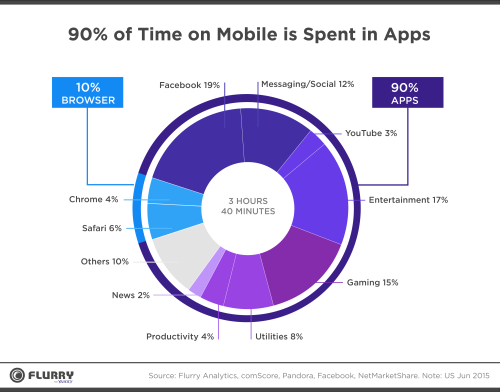Let’s begin this article with a quick, practical demonstration. If you have your smartphone handy (and I’m guessing you do, you may even be reading this via your device), unlock it, run a voice search and ask: “What is open data?”.
If you’re using an Android phone, your smartphone should now deliver a definition of open data, which you can see pulled through and displayed at the top of Google’s organic search results. There’s no need to click on a link to get your facts and the Wikipedia result you may have expected to appear right at the top is currently in fourth position.
But what does this all mean? Well, quite simply, it means that the web is changing, and digital brands need to do more than keep up – they need to look ahead. Embracing open data will be a key part of smart future-facing strategies, a belief which I hope this blog will illustrate and explain. But first, it’s time for some background…
The story so far
What this quick experiment shows is a tiny glimpse at the general direction the digital world is heading. Today, fewer users are actually visiting websites, instead consuming the information they want directly on search engine results pages or via apps. Here’s how the digital landscape is shifting (Cisco/CAIDA):
As you can see, traditional web usage (where visitors browse for and visit individual websites) is in decline, with more users directly consuming video and app-based content as their primary digital activity. It is this trend which prompted Wired to publish a 2010 article claiming that the “web is dead”.
Of course, the web is not dead – nor is it dying. In fact, the digital world is continually growing, with global usage at record levels (3.17 billion of us worldwide now access the internet). Rather, the web as we knew it is undergoing a radical change, fuelled largely by the rise of mobile devices.
The march of mobile
For years digital professionals have been prophesying a day when mobile internet use would overtake desktop based internet use. That day has finally come. In fact it came earlier than many predicted, with Comscore reporting that US internet users were officially more likely to “get digital” via mobile than desktop in February 2014. In May 2015, Google officially announced that more Google searches now took place via mobile devices than via desktop.
Everybody, come on, get appy
With the march of mobile showing no signs of slowing, and mobile now the main portal to the digital world for many of us, how smartphone users engage digitally is just as important as how many preferentially use mobile devices to access the internet.
US users spent a whopping 90% of their “mobile time” using apps in 2014, with Facebook’s app alone accounting for 19% of time spent using mobiles to access the internet. While the convenience, speed and user experience of apps makes them a far better choice for smartphone users, this shift to app usage has a huge impact on how people explore and experience the internet.
This is because apps are effectively “walled gardens”. In contrast to the utopian “open web” envisioned by Tim Berner’s Lee et al at the nascence of the world wide web, the mobile apps of today close off the internet, annexing users within closed systems and dictating which content they have access to. That means your website is now no longer a quick click away from a substantial slice of internet users, and many brands must now establish a presence within the dominant mobile apps (like Facebook) to sustain and develop a comparable digital presence.
The next chapter
Having painted (in very broad strokes) a picture of the ever-evolving digital world as it stands today, it’s time to offer a few pointers for digital businesses ready to evolve in sync the internet and benefit from rolling with the punches.
Are websites still relevant?
First up, with users increasingly “locked” into closed systems as a result of growing mobile (and therefore app) usage, and with even Google searches removing the need to visit websites thanks to answers displayed directly on search engine results pages (SERPS), are websites still relevant or are they a costly waste of time for savvy digital businesses?
The short answer is: “yes, but…”. Today websites still provide a tangible, authority-boosting hub for businesses – and a crucial sales platform for B2Cs in particular, but to enjoy these benefits, brands need to look far beyond their website and appreciate that they must now operate on a much wider and much more technical digital scale to operate smart, effective and profitable digital strategies.
Time to embrace open data
If users are no longer visiting websites, it’s time to bring the mountain to Mohammed. That means making your website and content as visible as possible via “the new web”. When Google serves up information on a SERP, you want it to be your information. When “similar articles” are suggested in Facebook’s app, you want your content to be presented. To make all of this happen, digital marketers need to embrace open data.
Avenues worth exploring (and which I will discuss in detail at my upcoming talk at the PerformanceIn Marketing Insights conference) include:
- Google AMP
- App Indexing & Deep Linking
- Structured Data
- Google Now Cards
- API Creation
Join Pete at Performance Marketing Insights (October 25-26), where he’ll be leading the session ‘Opening Your Data for the Next Generation of Searchers’.



